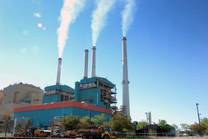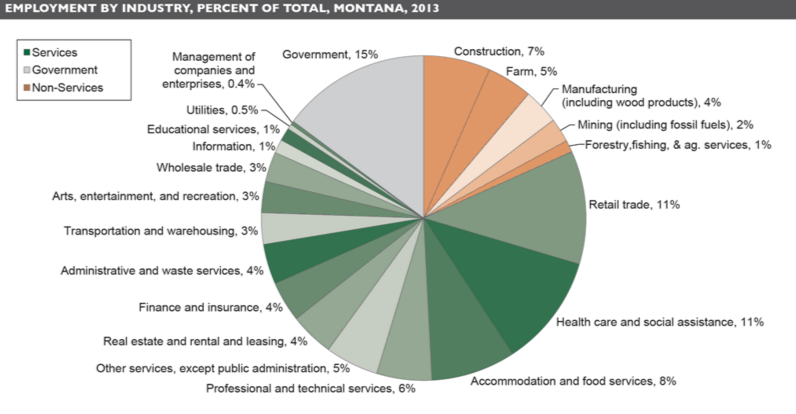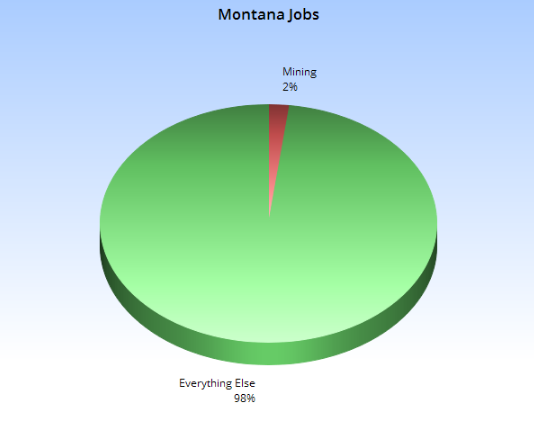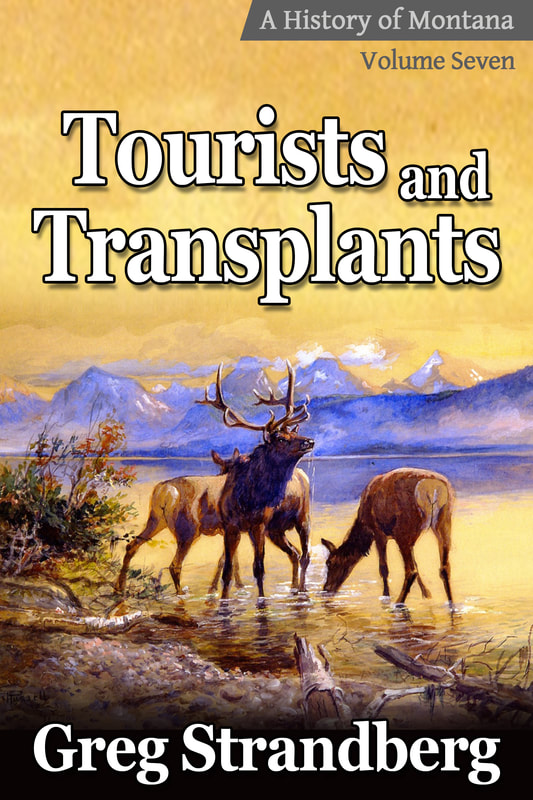 Colstrip
Colstrip
Alright, let’s talk about mining and how inconsequential it is in most of our lives.
Here’s a chart from 2013 that shows employment by sector in Montana.
It’s kind of hard to see there, the mining slice, so I’ve gone ahead and made-up an easier chart:
There, I think that does it.
As you can see, mining is inconsequential.
Oh, but gosh darn, I’m forgetting all the high wages it gives, the money it pours into the state treasury, and of course all the money that it makes for the rich out-of-staters that view Montana as little more than a colony.
What I’m not forgetting, however, are all the service industry folks, college students, retail workers, tourist industry staff, and everything else that makes up most of our workforce.
Yeah, these people often don’t get the big wages and they usually don’t have a union bitching to the politicians for them.
But they work hard and they try and they hope to hell things will get better for them and their kids.
So they’re good people.
Why is it, therefore, that we discount them so much?
Take Colstrip. Despite this being a few hundred workers, all I hear from the Montana Republican Party is that these jobs are critical.
What about my job?
What about that dishwasher or car mechanic or grocery store clerk…are they not critical too?
Well, they don’t get paid for shit and they sure as hell don’t have a union that takes a bit of their pay to better ‘represent’ them.
So they don’t have that.
But by God, they’ve got the numbers. We have about 64,000 jobs in our tourism industry. Hunting and angling alone bring in $1.3 billion to the state.
More than 2.3 million visited Glacier last year and more than 4 million came to Yellowstone. That’s a 16% increase over the previous year. State parks saw 2.4 million people come and visit.
We know that 120,000 Montanans are self-employed. We have more than 30,000 small businesses. Montana’s bioscience industry has 2,500 workers across 368 businesses.
We have 517 people working in our photonics industry and they make $59,000 a year on average, with benefits.
We have 19,000 workers making things in Montana and in 2014 we exported $1.5 billion in manufactured goods. Those workers make $46,000 on average.
Around 67,000 Montanans work in healthcare and that has an economic impact of $4.9 billion on the sate.
You’ll get all those numbers in the 2015 Montana Economic Development Report (PDF) that came out in January.
It makes it clear – mining is a small, niche industry in the state.
What the report doesn’t make clear is that mining has always been a small, niche industry in Montana.
In 1950 we had just under 5,000 working in mining and quarrying in the state, and another 450 in coal mining.
In 1960 we had 6,700 miners and by 1970 we had 5,600.
According to an American Mining Industry report, Montana had 309 mining operations in 2012 and just over 9,000 people worked in them. They tell us that another 13,400 people work indirectly for the industry, giving us a total mining workforce of 22,750 jobs.
We’re told that mining has a $2.5 billion economic impact in the state and that the average wage is $78,000.
That report came out of Washington D.C. and I feel it’s full of shit.
If we go to Montana Kids we see that Montana had just over 5,000 workers in mining in 2005 and that the average salary was $56,000.
So how, in 7 years, did 4,000 more workers suddenly get mining jobs in Montana, and pray tell, how did annual salaries go up nearly $20,000?
Well, because we had a bit more bias in those 2012 reports, that’s how.
Let’s be honest with ourselves, folks – mining is small and always has been.
But it makes a lot of money for rich people.
Even Montana Kids gives us the $2.3 billion economic output number.
My goodness those rich people back East make a lot of money. That’s what Montana was set up for in the 1880s – to make a lot of money for people back East.
Whether it’s a Hill a Harriman or a Heinze, Montana will always have rich people – most from out of state but a few homegrown – come in and exploit our resources and our labor to get at them.
We’ll be thrown pennies on the dollar for what the stuff is worth and after that the trains’ll ship it away.
Holes and scars and blemishes are left on the land, memories of what we lost, and what we gained for a short time because of it.
With most young people leaving the state and what we gained because of it then being sold to other out-of-staters…what does it matter?
Best not to think on it, best to just focus on Colstrip and their 600 workers and all the money they make for the railroads and our out-of-state landlords.
People like Arnon Gutfeld, K. Ross Toole, and Joseph Kinsey Howard knew this, they knew it well.
The rich didn't call us the Treasure State for nothing.



